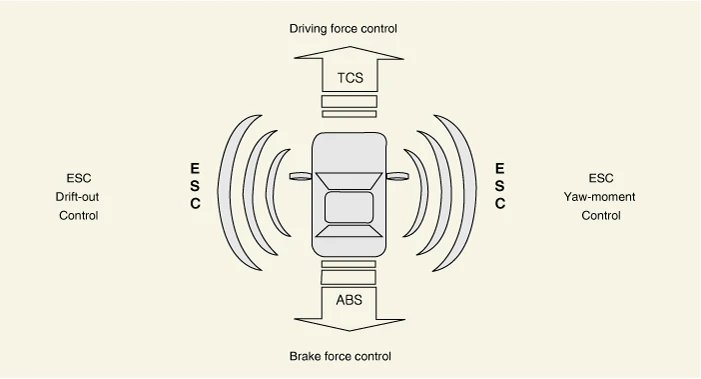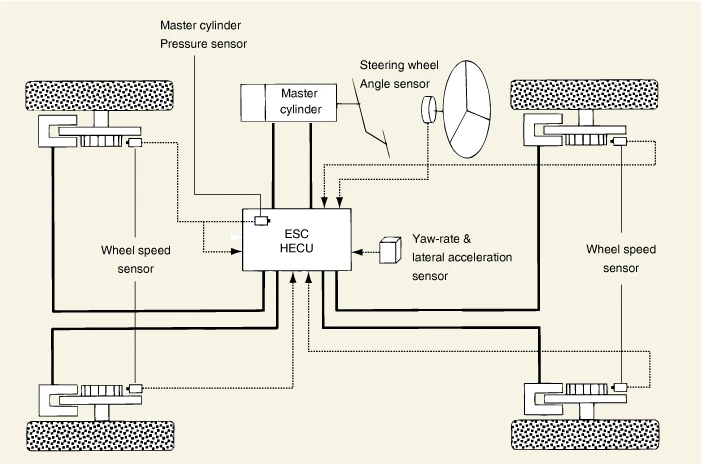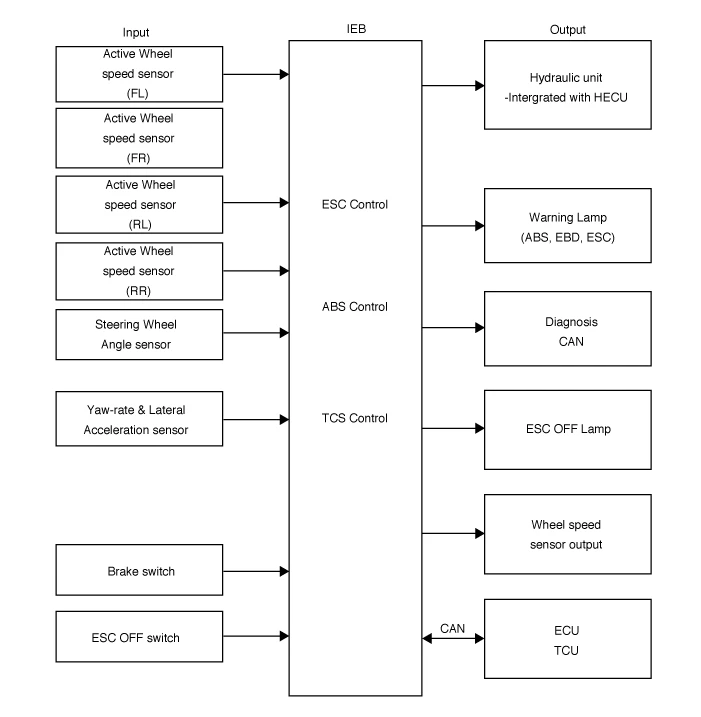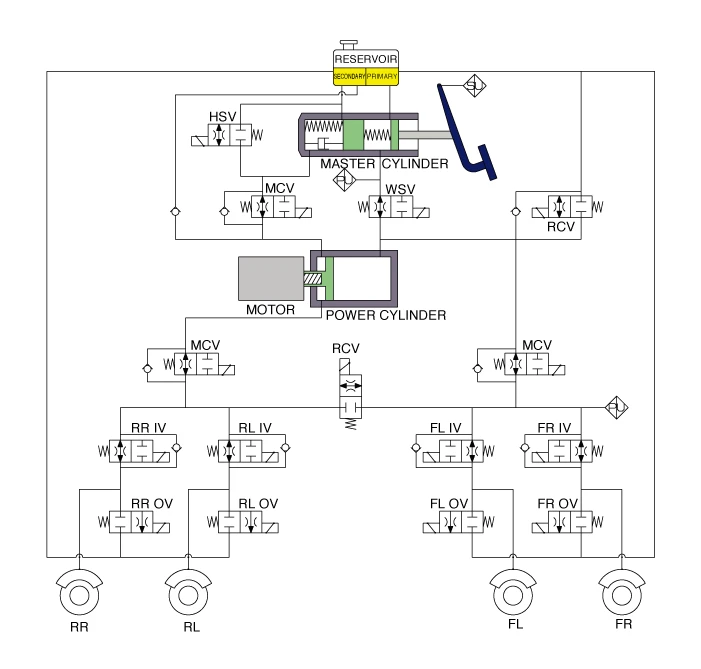Description
Electronic Stability Control (ESC) recognizes critical driving conditions, such as panic reactions in dangerous situations, and stabilizes the vehicle by individual wheel braking and engine control input.ESC adds an additional function known as Active Yaw Control (AYC) to the ABS, TCS, EBD and ESC functions. On contrary, the ABS/TCS function controls wheel slip during braking and accelerating, and thus, mainly intervenes in the longitudinal dynamics of the vehicle, and the active yaw control stabilizes the vehicle on the vertical axis.This is achieved by individual wheel brake intervention and adaptation of momentary engine torque with no need for any action to be taken by the driver.ESC essentially consists of three assemblies : the sensors, the electronic control unit and the actuators.The stability control feature works under all driving and operating conditions. Under certain driving conditions, the ABS/TCS function can be activated simultaneously with the ESC function in response to a command by the driver.In the event of a failure of the stability control function, the basic safety function, ABS, is still maintained.

Description of ESC Control
ESC system consists of ABS/EBD, TCS and AYC functions.ABS/ EBD function : The IEB changes the active sensor signal (current shift) coming from the four wheel sensors into square waves. By using the input of above signals, the IEB calculates the vehicle speed and the acceleration & deceleration of the four wheels. And, the IEB determines whether the ABS/EBD should be actuated or not.TCS function prevents the wheel slip of drive direction by adding the brake pressure and engine torque reduction via CAN communication. TCS function uses the wheel speed sensor signal to determine the wheel slip as far as ABS function.AYC function prevents unstable maneuver of the vehicle. To determine the vehicle maneuver, AYC function uses the maneuver sensor signals (Yaw Rate Sensor, Lateral Acceleration Sensor, and Steering Wheel Angle Sensor).If vehicle maneuver is unstable (Over Steer or Under Steer), AYC function applies the brake pressure on certain wheel, and sends engine torque reduction signal by CAN.After the ignition on, the IEB continuously diagnoses the system for failures (self-diagnosis). If a system failure is detected, the IEB informs driver of the system failure through the BRAKE/ABS/ESC warning lamp (fail-safe warning).

Input and Output Diagram

ESC Operation Mode

1.ESC Non-operation : Normal braking.
| Solenoid Valve | Continuity | Valve | Motor Pump | TC Valve |
| IN (NO) | OFF | OPEN | OFF | OFF |
| OUT (NC) | OFF | CLOSE |
2.ESC operation
| Solenoid Valve | Continuity | Valve | Motor Pump | TC Valve | |
|
Understeering (Only inside of rear wheel) |
IN (NO) | OFF | OPEN | ON | ON |
| OUT (NC) | OFF | CLOSE | |||
|
Oversteering (Only outside of front wheel) |
IN (NO) | OFF | OPEN | ||
| OUT (NC) | OFF | CLOSE | |||
Warning Lamps
| Lamp | Name |
|
|
ABS Warning Lamp |
|
|
EBD / Parking Brake Warning Lamp |
|
|
ESC Operating / Warning Lamp |
|
|
ESC OFF Lamp |
|
|
EPB Warning Lamp |
ABS Warning Lamp Module
The active ABS warning lamp module indicates the self-test and failure status of the ABS. The ABS warning lamp is turned on under the following conditions:– During the initialization phase after IGN ON. (continuously for 3 seconds).
– In the event of ABS function failure.
– During diagnostic mode.
– When the communication between IEB and PCM has failed.
– Cluster lamp is ON when communication is impossible with CAN module.
EBD / Parking Brake Warning Lamp Module
The active EBD warning lamp module indicates the self-test and failure status of the EBD. However, in case the Parking Brake Switch is turned on, the EBD warning lamp is always turned on regardless of EBD functions. The EBD warning lamp is turned on under the following conditions:– During the initialization phase after IGN ON. (continuously for 3 seconds).
– When the Parking Brake Switch is ON or brake fluid level is low.
– When the EBD function has a failure.
– During diagnostic mode.
– When the communication between IEB and PCM has failed.
– Cluster lamp is ON when communication is impossible with CAN module.
ESC Operating / Warning Lamp
The ESC function/warning lamp indicates the self-test and failure status of the ESC.The ESC function/warning lamp is turned on under the following conditions:– During the initialization phase after IGN ON. (continuously for 3 seconds).
– When the ESC function is inhibited by system failure.
– When the ESC control is operating. (Blinking - 2Hz)
– During diagnostic mode (except standard mode).
– Cluster lamp is ON when communication is impossible with CAN module.
ESC Off Lamp
The ESC Off lamp indicates the self-test and operating status of the ESC.The ESC Off lamp operates under the following conditions :– During the initialization mode after IGN ON. (continuously for 3 seconds).
– ESC Off lamp is ON when driver turns OFF ESC switch.




